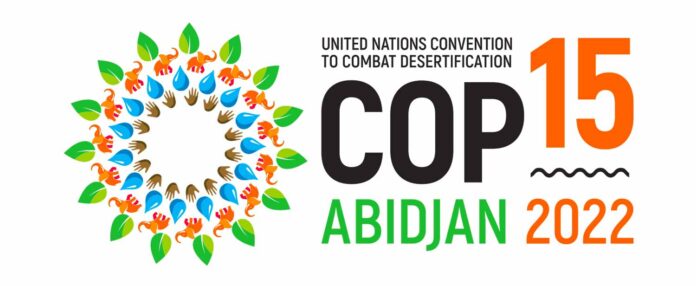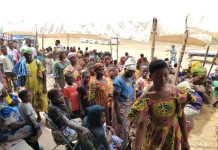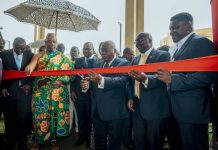ABIDJAN, Ivory Coast, May 13, 2022/ — The global economy could increase by more than $140 trillion a year [1], or 1.5 times the annual global GDP, if the objectives of the United Nations Convention to Combat Desertification (UNCCD) are achieved, participants heard during a side-event at the 15th summit of the UNCCD.
Camilla Nordheim-Larsen, Senior Partnerships, and Resource Mobilization Coordinator at the UN Convention, noted that action in the land sector has the potential to generate up to $140 trillion a year and create 400 million new jobs, while failure to act can result in losses in the range of $44 trillion.
The Sustainable Development Goal for Life on Land is least funded, but can contribute most to resilience, she said, speaking at an event on innovative finance mechanisms for sustainable landscapes, hosted by the African Development Bank and partners.
The cost of taking action may seem vast but governments could pay an even higher price if they do nothing. “The benefits of taking action against land degradation largely outweigh the costs of sustainable landscape management.
In Sub-Saharan Africa, it is by at least seven times [2]! Inaction costs Sub-Saharan countries $490 billion per year, while according to the Economics of Land Degradation Initiative, action to reverse land degradation could generate benefits worth up to $1.4 trillion,” said Luc Gnacadja, former Executive Secretary of the UN Convention to Combat Desertification and former Minister of Environment of Benin, currently acting as a Co-Chair of the Adaptation Benefits Mechanism Executive Committee.
Rishabh Khanna, Chief Impact Officer at Earthbanc and a steering committee member of the Initiative of Land, Lives and Peace, presented a new initiative launched together with the UN Convention at the summit — digital sustainable land bonds, which allow carbon buyers to purchase at an earlier stage of development.
“Finance for land and ecosystem restoration makes up less than 1% of all climate finance due to a lack of universal capital market products for these activities. Part of the reason is that monitoring, reporting and verification of sustainable land management has been labor-intensive, sometimes inaccurate and uses fragmented measurement and accounting methodologies.”
The Adaptation Benefits Mechanism, piloted by the African Development Bank between 2019 and 2023, certifies and monetizes the environmental, social, and economic benefits of adaptation actions, including for sustainable and resilient landscapes.
“Unlike for mitigation, where cost-efficiency is the driving factor for investments, revenues from monetizing the adaptation benefits are likely to be directed towards actions in vulnerable communities that are needed most, because they deliver compelling stories,” explained Gareth Philips, Climate and Environment Finance Manager at the African Development Bank.
Dr. Peter Minang, Director for Africa of the International Agroforestry Center and Global Coordinator of the ASB Partnership for Tropical Forest Margins, visualized the groundbreaking role that sustainable agroforestry measures and better enabling environments can have for empowering local communities through a case study video on financing sustainable community forest enterprises in Cameroon.
“We are the first organization to pilot the Adaptation Benefits Mechanism through a project in the cocoa sector in Côte d’Ivoire. In Cameroon, we are using a similar approach and more concrete steps have already happened to enable certification in the near future that can deliver new finance for developing sustainable and resilient agroforestry systems for the local communities.
One of our best practices is the use of hand-held machines to monitor all indicators, which we could verify once a year, for instance with satellite image technology,” he said.
[1] Speech of the Deputy Secretary-General at the Heads of State Meeting at UNCCD COP15. Available on the internet https://bit.ly/3leWOQZ
[2] Global Land Outlook 2022, page 5. Available on the Internet at: https://bit.ly/3LbCvyK










































